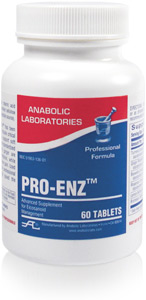Salizain
Salizain contains a 979.2 mg extract of white willow bark extract that has been concentrated to contain 240 mg of salicin. The remaining 740 mg are unique white willow bioflavonoids. White willow has been used for centuries to treat pain and inflammation. It was one of Hippocrates’ favorite botanicals for pain relief.
Long before there was aspirin, there was white willow bark. Records suggest that as far back as 6000 years ago, white willow was used in Mesopotamia. Subsequently, multiple ancient peoples recorded the use of white willow to cure pain and inflammation, including the Assyrian, Babylonian, Sumerian, Egyptian, Chinese, Greek and Roman civilizations (1).
Hippocrates (460–370 BC) recommended chewing willow bark to patients suffering from fever, inflammation, and pain. He also prescribed a brew of willow leaves to ease the excruciating pains of childbirth (1). Since that time, white willow has continued to be used to ease pain and inflammation.
Interest in the chemical properties of willow bark led chemists in the early 1800s to identify a therapeutically active component that was named salicin. It was then determined that salicin consisted of a glucose molecule attached to a salicyl alcohol called saligenin. Oxidation of salicyl alcohol led to the synthesis of salicylic acid, which was found to be a gut irritant. Salicylic acid was acetylated and converted into the less irritating acetyl salicylic acid, which was registered by the Bayer Company Aspirin in 1899 (1).
During the period when chemists learned to convert salicin into acetylsalicylic acid, an article was published in the Lancet, in 1876, entitled “The treatment of rheumatism by salicin and salicylic acid” (2). The paper describes how patients were treated with salicin/salicylate, which resulted in a complete reduction of fever and joint pain/inflammation.
After the development of aspirin and other nonsteroidal anti-inflammatory drugs (NSAIDs), little attention was given to white willow. More recently, a greater interest in white willow as an alternative NSAID is emerging.
Individuals who regularly take NSAIDs for pain and inflammation are at risk for developing gut ulceration. Indeed, next to H. pylori infection, NSAIDs are the most common cause of peptic ulcers. In this context, a key benefit is that the adverse effects of taking white willow are the same as placebo (3). And the great benefit is that white willow may also be as effective as NSAIDs. In one study, when white willow was compared to Vioxx, pain reduction was identical in each group; however, there were less side effects in those taking willow bark (4).
In 2007, the Annals of Internal Medicine published a joint clinical practice guideline for the treatment of acute low back pain that was developed by the American Pain Society and the American College of Physicians (5). They concluded that the level of evidence supporting the use of white willow was same as for acetaminophen, NSAIDs, and muscle relaxants.
For individuals taking over-the-counter NSAIDs who wish to avoid gastric complications, switching to white willow bark may be a good option. Those who should not take white willow would be the same individuals who should not take aspirin: those with aspirin sensitivities and those taking blood thinners such as coumadin.
In addition to white willow, the Basic or Advanced Health Promotion supplements should be considered in conjunction with eating an anti-inflammatory eating diet per The DeFlame Diet (6).
References
- Mahdi JG, Mahdi AJ, Mahdi AJ, Bowen ID. The historical analysis of aspirin discovery, its relation to the willow tree and antiproliferative and anticancer potential. Cell Prolif. 2006;39:147-55.
- MacLagan TJ. The treatment of rheumatism by salicin and salicylic acid. Lancet. 1876; I:342.
- Chrubasik S, Eisenberg E, Balan E, Weinberger T, Luzati R, Conradt C. Treatment of low back pain exacerbations with willow bark extract: a randomized double-blind study. Am J Med. 2000;109:9-14.
- Chrubasik S, Kunzel O, Model A, Conradt C, Black A. Treatment of low back pain with a herbal or synthetic anti-rheumatic: a randomized controlled study. Willow bark extract for low back pain. Rheumatology. 2001;40(12):1388-93.
- Chou R, Qaseem A, Snow V et al. Diagnosis and treatment of low back pain: a joint clinical practice guideline from the American College of Physicians and the American Pain Society. Ann Intern Med. 2007;147:478-91.
- Seaman DR. The diet-induced proinflammatory state: a cause of chronic pain and other degenerative diseases? J Manipulative Physiol Ther. 2002;25:168-79.





